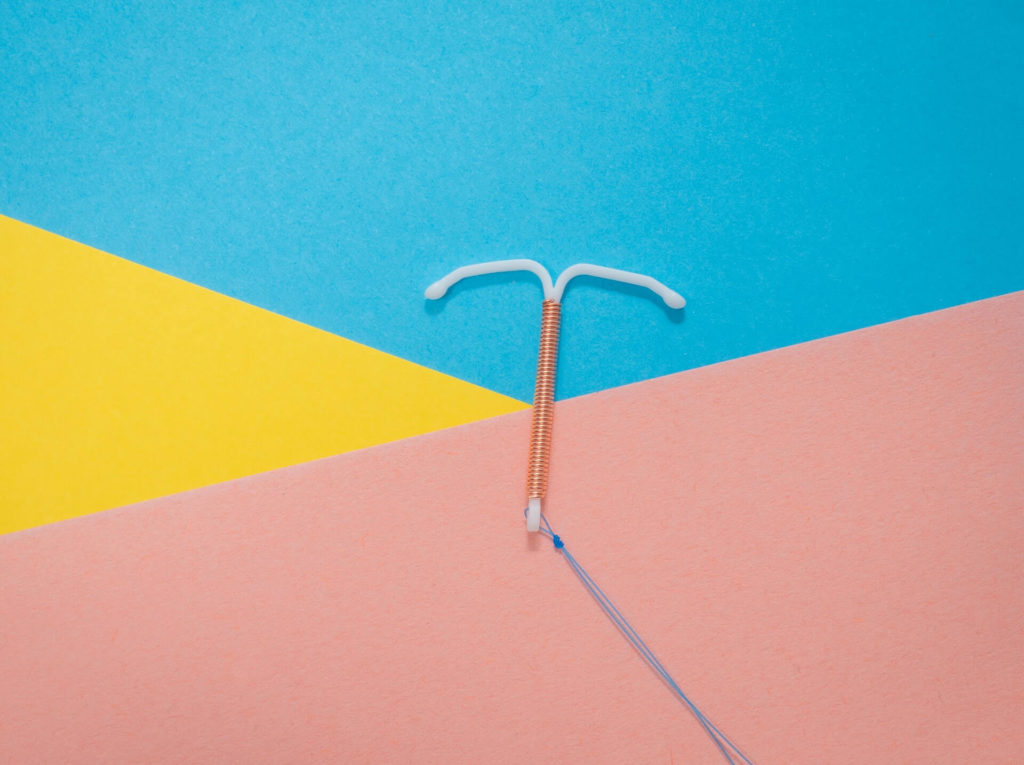Paragard is the only brand of copper intrauterine device (IUD) available in the United States.
And while a number of women prefer choosing the copper IUD to avoid some hormonal side effects caused by its counterpart, it’s important to note that Paragard is linked to more and sometimes worse cramping.
In fact:
Aside from recent complaints filed in the Paragard lawsuits that talked about the copper IUD being prone to breaking during removal, Paragard IUD has also been known to cause an increase in menstrual cramping and heavier flow.
And if you’re here to get that cramping off your uterus, know that you are not alone: some amount of discomfort or cramping is pretty normal following IUD placement and even removal — as long as it doesn’t get too severe for you to tolerate.
Read on to learn more about why you are getting these cramps and what you can do to deal with them.
Are Cramps Normal After IUD Insertion?
IUD cramps are normal to feel during the quick process of inserting the device, which usually takes just a couple of minutes.
During an IUD insertion, the nurse or doctor will use an instrument called a speculum and put it into the vagina so that it’s easier to inspect or observe the cervix. Then, they will insert a small plastic tube that contains the IUD through your cervix and into your uterus. Somewhere in this procedure, you may experience cramping or pain.
But since each person is different, its severity may vary from person to person. Normally, however, all those shall pass.
In fact:
Cramping is your body’s normal reaction to your cervix opening and making way for its new roommate — your newly placed intrauterine device (IUD).
However, in some cases, other women may potentially continue to experience cramping weeks or months after IUD insertion. Normally, this should ease up in time.
But sometimes, IUD cramps with Paragard can potentially last up to 3-6 months, along with irregular bleeding or spotting. If in case, you experience cramping beyond this period and if the pain gets too severe that it interferes with your daily activities, it is important to talk to your health care provider for medical advice.
Why Does Paragard Cause More Cramping?
Although considered rare, people who opted for a Paragard IUD may experience heavier periods and intense menstrual cramps which are more difficult to manage, especially in about 3 months after placement of the device.
For the most part, these symptoms may get better over time.
Aside from these symptoms, however, the Paragard birth control IUD is also known to cause the following side effects:
- back pain
- nausea
- dizziness
- bleeding between periods
- painful sex
These mild and more common side effects tend to diminish after 2-3 months. But the copper IUD can also potentially cause some rare yet serious side effects, including:
- ectopic pregnancy
- pelvic inflammatory disease (PID)
- uterine perforation
- device expulsion
- embedment
- difficult removal (women may experience slow heart rate, seizures, and the device has the risk of breaking during removal)
How Does This Affect my Menstrual Cycle?
The effect that your IUD will have on your menstrual cycle will largely depend on the type of IUD contraception you have. Basically, there are two types: non-hormonal or copper IUD and hormonal IUD.
The copper IUD protects against pregnancy by causing inflammation in your uterine lining that is toxic to sperm and deactivates it. You will still have your menstrual period with this type of IUD. However, it is common for these periods to be heavier or longer, and you may have unscheduled bleeding or spotting as well.
In fact:
A 2015 study found that more than 70 percent of copper IUD users experienced heavier bleeding than usual three months after insertion. Then, six months following placement of the device, less than half had heavier bleeding and increased cramping. As your body gets used to the IUD, you may also experience bleeding between your periods.
On the other hand, if you opted for a hormonal IUD like Mirena, you may have lighter and briefer periods. Hormonal IUDs prevent pregnancy by thickening your cervical mucus so the sperm can be blocked and not get to the egg.
It is important to remember, however, that regardless of the type of IUD you have, symptoms like cramping, bleeding, and spotting between periods should normally subside over time. If they don’t, it’s always best to talk to your doctor for advice.
What Helps with Paragard Cramps?
Your cramps may not go away completely, but here are some approaches you can try to reduce your discomfort:
Taking OTC Pain Relievers
You can try taking pain medications such as Tylenol (acetaminophen), Advil (ibuprofen), or Aleve (naproxen sodium) an hour before your appointment to help lessen any discomfort or cramping during IUD placement.
Ask your doctor about the right dosage to help you find relief from cramping.
Heating Pads
Nothing can go wrong with the good old heating pad or hot water bottle. Its warmth can help lessen your IUD-related cramping, tension, or pain.
Get Moving
Fret not — it doesn’t have to be a full-on cardio. Light exercises including walking, stretching, or gentle yoga may help reduce tension and cramping and may serve as good distractions to help you keep your mind off the pain as well.
Take a Break
Hold up: the irony is not lost on me. Because while some women may quickly come back to their usual activities after getting an IUD, others may want to take it slow and have a break following their appointment.
Supplements
Adding supplements such as vitamin B-6, vitamin E, magnesium, and omega-3 fatty acids to your diet may help with the cramping. Be sure to consult with your doctor first about adding these supplements to your routine as they may offer advice on what’s best suited for you to try.
What to Do if Your Nasty Cramps Just Won’t Leave You
Each person is different, which means that some people’s uterus may not just be as welcoming as others.
That said:
Your body may react differently to the IUD implanted inside you, and your cramps may not go away. Although it’s normal for cramping to last for a few months or longer, severe cramping that persists for 3 months or more may be a cause for worry.
As such, you should call your doctor and have yourself checked to make sure your IUD is still in the right position. In case it’s not, they can remove it or you can also opt to have it removed if you want to.
You need to see your doctor if you experience the following:
- fever or chills
- foul-smelling discharge
- painful periods that interfere with daily activities
- severe cramping
- unusually heavy bleeding
In general, if you’re not happy with the symptoms you feel post-appointment, or you begin to notice any new pain, you should call your doctor.
These symptoms may be indicative of other IUD-related side effects, including expulsion or infections.
Pain During IUD Removal
During IUD removal, the doctor will gently pull on the hanging threads of your IUD with the use of a special grasping tool.
You may also feel mild cramping during the procedure, but it may not be as intense as what you had during the insertion of the device. Others may also feel cramping after removal, but it usually passes after a few minutes.
However, just like with IUD insertion, if the pain gets too severe, you may want to talk about it with your doctor.
Moreover, with Paragard, there are reported cases where the body or one of the arms of the IUD broke off during removal. In this case, the removal procedure may be more difficult. Some women were even forced to have a full hysterectomy or surgical removal of the uterus to avoid further complications potentially caused by the broken pieces of the IUD.
Be sure to always talk to your doctor regarding your IUD-related concerns or questions. Oftentimes, the normal adjustment time for your body to get used to the IUD is around six months. If you are considering a change in your birth control method, be sure to discuss it with your gynecologist as well.



